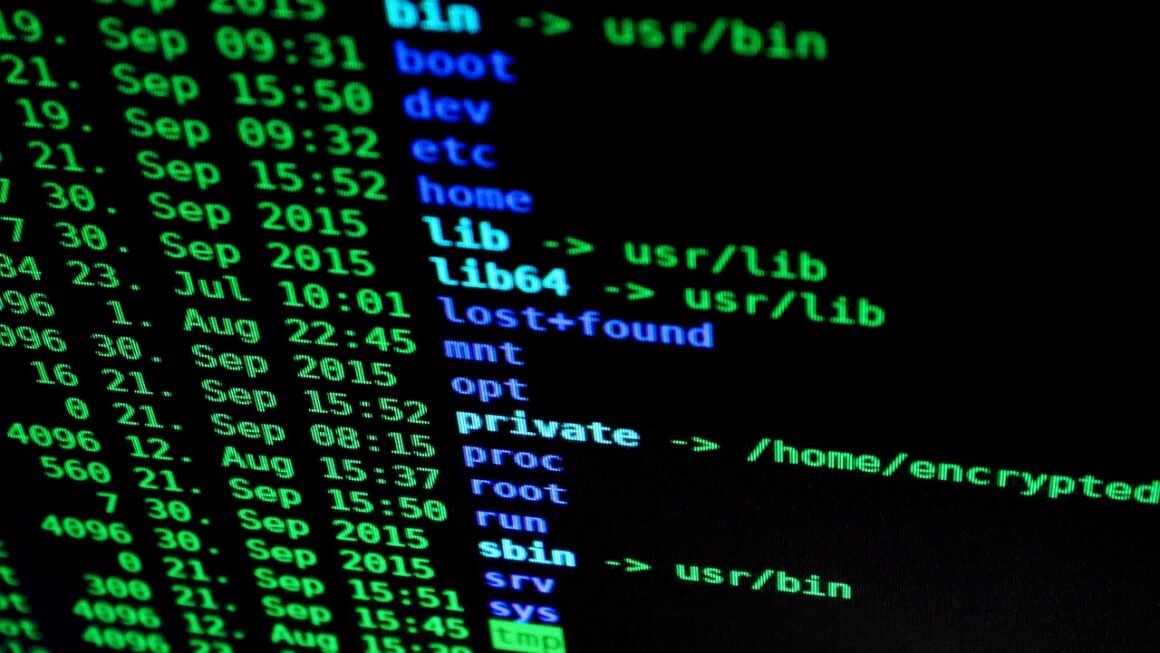Imagine waking up to find your bank account emptied, your social media profiles hijacked, or your company’s sensitive data leaked online. This isn’t a scene from a thriller movie; it’s the grim reality of cybercrime, a rapidly evolving threat landscape that impacts individuals, businesses, and governments worldwide. In this blog post, we’ll delve into the multifaceted world of cybercrime, exploring its various forms, the devastating consequences, and crucial steps you can take to protect yourself and your organization.
Understanding the Landscape of Cybercrime
Defining Cybercrime
Cybercrime, also known as computer crime, encompasses any illegal activity that involves a computer, a networked device or a network. It can range from simple hacking to sophisticated international schemes, targeting everything from personal information to critical infrastructure.
The Scope of the Problem
The statistics paint a stark picture. According to the 2023 Internet Crime Report from the FBI’s Internet Crime Complaint Center (IC3), reported losses due to cybercrime exceeded $10.3 billion in the United States alone. This figure only represents reported cases, suggesting the actual scope is far larger.
- Cybercrime is a global issue, affecting all countries and industries.
- The sophistication of attacks is constantly increasing, making detection and prevention more challenging.
- Small and medium-sized businesses (SMBs) are increasingly targeted, often lacking the resources to adequately defend themselves.
Common Types of Cybercrime
The cybercrime landscape is diverse, with new threats emerging constantly. Some of the most prevalent types include:
- Phishing: Deceptive emails, messages, or websites designed to trick individuals into revealing sensitive information, such as passwords or credit card details. Example: A fake email purporting to be from your bank, asking you to verify your account details.
- Malware: Malicious software, including viruses, worms, and Trojans, designed to infiltrate and damage computer systems. Example: Ransomware that encrypts your files and demands payment for their decryption.
- Ransomware: A type of malware that encrypts a victim’s files, rendering them inaccessible until a ransom is paid. Example: The Colonial Pipeline attack in 2021, which disrupted fuel supplies across the eastern United States.
- Identity Theft: Stealing someone’s personal information, such as their Social Security number or credit card details, to commit fraud. Example: Opening fraudulent accounts in someone else’s name.
- Data Breaches: Unauthorized access and disclosure of sensitive data, often resulting in financial losses, reputational damage, and legal liabilities. Example: The Target data breach in 2013, which compromised the personal information of over 40 million customers.
- Denial-of-Service (DoS) and Distributed Denial-of-Service (DDoS) Attacks: Overwhelming a target server or network with traffic, rendering it unavailable to legitimate users. Example: A DDoS attack targeting an e-commerce website during a peak shopping period.
The Impact of Cybercrime
Financial Losses
The most obvious impact of cybercrime is financial. Victims can lose money through fraudulent transactions, ransomware payments, and the cost of recovering from attacks.
- Businesses can face significant expenses related to incident response, data recovery, and legal fees.
- Individuals can lose their life savings or incur debt due to identity theft.
Reputational Damage
A cyberattack can severely damage a company’s reputation, leading to a loss of customer trust and decreased sales.
- Customers are less likely to do business with a company that has suffered a data breach.
- Negative media coverage can further exacerbate the damage.
Operational Disruptions
Cyberattacks can disrupt business operations, leading to downtime and lost productivity.
- Ransomware attacks can cripple entire networks, making it impossible for employees to work.
- DoS attacks can take websites offline, preventing customers from accessing online services.
Legal and Regulatory Consequences
Companies that fail to protect sensitive data can face legal action and regulatory fines.
- Regulations like GDPR and CCPA impose strict requirements for data protection.
- Failure to comply with these regulations can result in hefty penalties.
Protecting Yourself and Your Business from Cybercrime
Implement Strong Passwords and Multi-Factor Authentication (MFA)
Strong passwords are the first line of defense against cyberattacks. MFA adds an extra layer of security by requiring users to provide multiple forms of authentication.
- Use complex passwords that include a mix of uppercase and lowercase letters, numbers, and symbols.
- Enable MFA on all accounts that support it, including email, social media, and banking.
- Use a password manager to securely store and manage your passwords.
Keep Software Updated
Software updates often include security patches that fix vulnerabilities that cybercriminals can exploit.
- Enable automatic updates for your operating system, web browser, and other software.
- Regularly scan your systems for outdated software.
Use a Firewall and Antivirus Software
Firewalls and antivirus software can help protect your computer and network from malware and other threats.
- Install a reputable antivirus program and keep it up to date.
- Configure your firewall to block unauthorized access to your network.
Be Wary of Phishing Emails and Suspicious Links
Phishing emails are a common way for cybercriminals to steal sensitive information. Be cautious of any email that asks you to provide personal information or click on a suspicious link.
- Verify the sender’s address before clicking on any links.
- Never provide personal information in response to an unsolicited email.
- Be skeptical of emails that create a sense of urgency or pressure you to act quickly.
Train Employees on Cybersecurity Best Practices
Human error is a major factor in many cyberattacks. Educate your employees about cybersecurity best practices to help them avoid making mistakes that could compromise your organization’s security.
- Conduct regular cybersecurity training sessions.
- Teach employees how to identify and report phishing emails.
- Establish clear policies and procedures for data security.
- Simulate phishing attacks to test employees’ awareness.
Implement Data Encryption
Encrypting sensitive data can protect it from unauthorized access, even if your system is compromised.
- Encrypt data at rest and in transit.
- Use strong encryption algorithms.
Regularly Back Up Your Data
Backing up your data allows you to restore it in the event of a cyberattack or other disaster.
- Back up your data regularly, both on-site and off-site.
- Test your backups to ensure that they can be restored.
Develop an Incident Response Plan
An incident response plan outlines the steps you will take in the event of a cyberattack.
- Identify key personnel who will be involved in the response.
- Establish procedures for containing, eradicating, and recovering from attacks.
- Practice your incident response plan regularly.
The Future of Cybercrime
Evolving Threats
Cybercrime is a constantly evolving threat landscape. New technologies and tactics are constantly being developed, making it challenging to stay ahead of the curve. The rise of Artificial Intelligence (AI) is particularly concerning, as it enables cybercriminals to automate attacks, create more convincing phishing emails, and bypass security measures.
Increased Regulation
As cybercrime becomes more prevalent, governments around the world are enacting new laws and regulations to protect consumers and businesses. This trend is likely to continue, with increased emphasis on data privacy, cybersecurity standards, and incident reporting.
Importance of Collaboration
Combating cybercrime requires collaboration between governments, businesses, and individuals. Sharing information about threats and best practices can help everyone stay safer online.
- Participate in industry forums and cybersecurity communities.
- Report cybercrime incidents to law enforcement agencies.
Conclusion
Cybercrime is a serious and growing threat that requires a proactive and comprehensive approach to security. By understanding the risks, implementing appropriate security measures, and staying informed about the latest threats, you can significantly reduce your risk of becoming a victim. Remember, cybersecurity is not a one-time fix but an ongoing process of assessment, adaptation, and improvement. Protect yourself, protect your business, and contribute to a safer online world.



